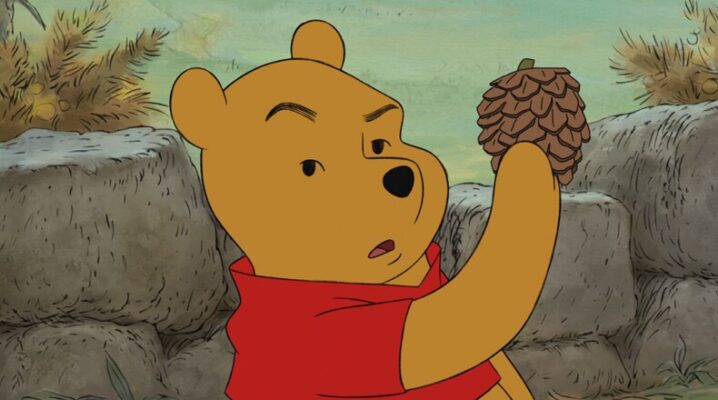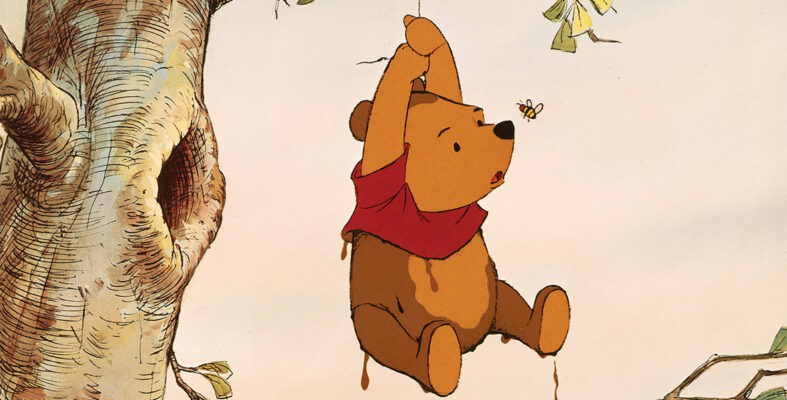Movie News
Where Was Winnie the Pooh From? The Origin of the Beloved Bear
Winnie the Pooh, the honey-loving bear adored by millions, has charmed readers and viewers for nearly a century. But while many people know Pooh as the central character of A.A. Milne’s stories, fewer are aware of his origins. Where was Winnie the Pooh from? The story behind this iconic character’s birthplace is as whimsical and heartwarming as the adventures in the Hundred Acre Wood. In this article, we will explore the origins of Winnie the Pooh

Where Was Winnie the Pooh From? The Origin of the Beloved Bear
In the literary world, Winnie the Pooh’s home is the enchanting Hundred Acre Wood, a magical forest filled with lush trees, meandering paths, and friendly animals. This fictional setting is the backdrop for many of Pooh’s adventures with his friends, including Piglet, Tigger, Eeyore, and Christopher Robin.
The Hundred Acre Wood itself is based on a real place—Ashdown Forest, a picturesque woodland area in East Sussex, England. A.A. Milne and his son, Christopher Robin Milne, spent many days exploring Ashdown Forest, and the landscape left a deep impression on the author. Milne incorporated the beauty and tranquility of the forest into his stories, transforming it into the Hundred Acre Wood, a place where imagination and reality blended seamlessly.
In the Winnie-the-Pooh books, the Hundred Acre Wood is not just a setting—it’s a character in itself. The wood is a peaceful, timeless place where Pooh and his friends go on adventures, solve problems, and contemplate life’s simple pleasures. While the Hundred Acre Wood may be a product of Milne’s imagination, its roots lie in the real-world beauty of Ashdown Forest, making it a central part of Winnie the Pooh’s origins.
Where Did the Name “Winnie” Come From?
Now that we know where Winnie the Pooh was from in the fictional world, let’s turn to the real-life origins of the bear’s name. The first part of the bear’s name, “Winnie,” was inspired by a real bear named Winnipeg, or Winnie for short. Winnipeg was a black bear from Canada who became a beloved attraction at the London Zoo.

In 1914, Lieutenant Harry Colebourn, a Canadian soldier, purchased a bear cub in Ontario while en route to fight in World War I. He named the bear Winnipeg after his hometown, and “Winnie” quickly became a mascot for Colebourn’s regiment. After the war, Colebourn donated Winnie to the London Zoo, where she remained for the rest of her life.
It was during visits to the zoo that Christopher Robin Milne, A.A. Milne’s son, encountered Winnie and became so enamored with her that he renamed his own stuffed bear after the zoo’s famous resident. This real-life Winnie played a pivotal role in the creation of the fictional character we know today.
The Story Behind the Name “Pooh”
While the name “Winnie” came from a real bear, what about “Pooh”? This part of the name has a more playful origin. Christopher Robin Milne also had a swan that he had affectionately named “Pooh.” In Milne’s When We Were Very Young, published in 1924, the author mentions “Pooh the swan,” an amusing nod to the childlike tendency to give whimsical names to animals.
When it came time to name his stuffed bear in the stories, A.A. Milne combined the two names, creating the now-famous moniker, “Winnie the Pooh.” It’s a name that has stuck with fans for generations, capturing the essence of childhood innocence and wonder.
The Real-Life Inspiration: Christopher Robin and His Toys
The character of Winnie the Pooh was born out of the imaginative play of Christopher Robin Milne, the son of A.A. Milne. The young boy’s favorite stuffed animals—his bear, Piglet, Eeyore, Kanga, Roo, and Tigger—became the foundation for the characters in the Winnie-the-Pooh stories.

While Christopher Robin’s stuffed bear, originally named Edward, was renamed Winnie after the real bear at the London Zoo, the other animals also had their origins in the young boy’s toy collection. These toys, much like Winnie the Pooh, found their home in the Hundred Acre Wood, where they embarked on countless adventures.
A.A. Milne’s ability to capture his son’s world and turn it into timeless stories was one of the key factors in the success of Winnie-the-Pooh. Through Christopher Robin’s imagination, Milne created a world that felt both real and magical—a place where a humble bear could become the hero of every adventure.
A.A. Milne: The Creator of Winnie the Pooh
A.A. Milne, the creator of Winnie the Pooh, was a successful playwright and novelist before the publication of the Winnie-the-Pooh books. Born in London in 1882, Milne began his writing career as a contributor to the humor magazine Punch, where he developed his distinct voice and wit.
Milne’s inspiration for the Winnie the Pooh stories came from observing his son, Christopher Robin, and his adventures with his beloved toys. It was this father-son bond that fueled Milne’s creativity, leading to the creation of the first Winnie-the-Pooh book in 1926. The stories were an instant hit, beloved for their gentle humor, endearing characters, and timeless themes of friendship and adventure.
The success of the Winnie-the-Pooh books helped cement Milne’s legacy as one of the most beloved authors of children’s literature. His work has been translated into numerous languages and adapted into films, TV shows, and stage productions, making Winnie the Pooh a global phenomenon.
Where Was Winnie the Pooh From in Popular Culture?
While Winnie the Pooh’s fictional home is the Hundred Acre Wood, his reach extends far beyond the boundaries of literature. Over the decades, the character has become a cultural icon, appearing in movies, TV series, theme park attractions, and a vast array of merchandise.

The Disney Company, which acquired the rights to the Winnie the Pooh characters in the 1960s, played a significant role in popularizing the bear worldwide. The animated versions of the stories, starting with the 1966 short film Winnie the Pooh and the Honey Tree, introduced new generations of children to the gentle, honey-loving bear and his friends. The success of these adaptations has helped Winnie the Pooh remain a beloved figure in popular culture for over 90 years.
The Symbolism of Winnie the Pooh’s Home: A Timeless Escape
The Hundred Acre Wood, where Winnie the Pooh and his friends live, symbolizes more than just a setting for stories—it represents an idealized version of childhood. It’s a place where the worries of the adult world fade away, and the simple joys of friendship, adventure, and curiosity take center stage.
In this peaceful woodland, time seems to stand still. The characters don’t age, and their problems are never too overwhelming. Whether it’s Pooh’s quest for honey or Eeyore’s search for his tail, the challenges faced by the residents of the Hundred Acre Wood are always resolved with kindness and cooperation.
For many readers and viewers, the Hundred Acre Wood represents a refuge from the complexities of life, a place where they can return to the simplicity of childhood, if only for a little while. This timeless quality is one of the reasons why Winnie the Pooh continues to captivate audiences of all ages.
Where Was Winnie the Pooh From?
So, where was Winnie the Pooh from? In the fictional world, he hails from the Hundred Acre Wood, a magical forest based on the real Ashdown Forest in England. But in the real world, Winnie the Pooh’s origins are tied to a Canadian bear named Winnipeg, a beloved stuffed bear owned by Christopher Robin Milne, and the imagination of A.A. Milne.
Winnie the Pooh’s story is one of love, creativity, and the bond between a father and son. Through A.A. Milne’s writing, the character has touched the hearts of millions and continues to be a source of joy for generations of readers.
Celebrate your love for Winnie the Pooh by checking out our exclusive collection of Winnie the Pooh T-shirts at Alibaytoon Store! Wear your favorite bear and bring a little bit of the Hundred Acre Wood into your everyday life!
